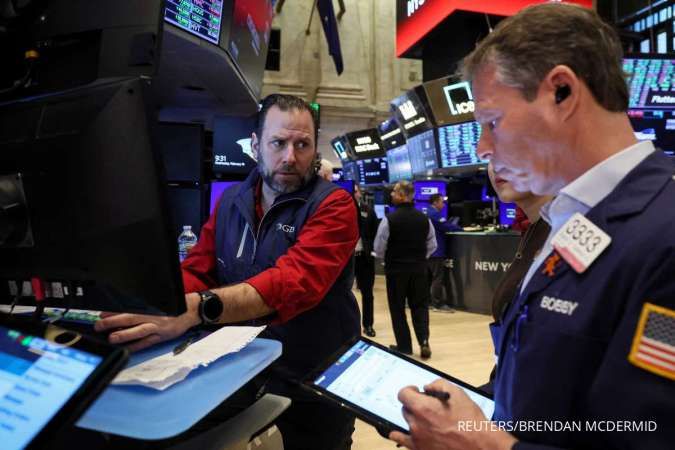KONTAN.CO.ID - WASHINGTON, March 29 (Reuters) - The latest U.S. inflation data is "along the lines of what we would like to see," Federal Reserve Chair Jerome Powell said on Friday in comments that appeared to keep the central bank's baseline for interest rate cuts this year intact. The personal consumption expenditures (PCE) price index data for February, which was released on Friday, "is what we were expecting," Powell said, and even though the numbers showed less of a slowdown than last year, "you won't see us overreacting." The data last month were "not as low as most of the good readings we got in the second half of last year, but it's definitely more along the lines of what we want to see," Powell said during an appearance at the San Francisco Fed where he was interviewed by Kai Ryssdal of public radio's "Marketplace" program.
Powell's comments were in line with his remarks after the Fed's policy meeting last week, in which he said higher-than-expected inflation in January and February had not changed the sense that price rises would keep falling this year to the central bank's 2% target.
Baca Juga: Pope Francis, in Easter Address, Calls for Gaza Ceasefire U.S. Commerce Department data on Friday showed the PCE price index increased at a 2.5% annual rate in February, up from 2.4% in the prior month. The number excluding volatile food and energy prices rose 0.3% on a month-to-month basis, slightly faster than Powell anticipated when he said last week that core inflation would be "well below" 0.3% in February. Lou Crandall, chief economist at Wrightson ICAP, said the unrounded core PCE figure did come in just below that figure, at 0.26%. "That's still above their 2% annualized objective, but isn't a terrible number," he said. Indeed, Powell indicated the latest PCE report did not undermine the central bank's baseline outlook, but said with the economy on a "strong" footing, "that means we don't need to be in a hurry to cut." The Fed chief will have another opportunity next week to hone his message on the monetary policy outlook, with a second public appearance in the San Francisco Bay Area on Wednesday at Stanford University, where he will deliver prepared remarks.
Baca Juga: France to Send Old Armored Vehicles, New Missiles to Ukraine "While we anticipate a more carefully worded message with respect to the near-term outlook," economists at Deutsche Bank wrote about the coming event, "we don't expect a material deviation from the messaging coming out of the March 20 FOMC (Federal Open Market Committee) meeting, namely that the Fed is data-dependent and requires further evidence that inflation is on a path to 2%."
WE WILL BE CAREFUL
Some details of the PCE data for February, economists noted, showed improvement in aspects of inflation that the Fed considers important, even as the headline numbers have shown little progress in the first two months of the year. The central bank last week held its benchmark overnight interest rate steady in the 5.25%-5.50% range and also reaffirmed - narrowly - a baseline projection that the rate will fall by three-quarters of a percentage point by the end of 2024. The Fed is expected to hold rates steady, as it has since July of last year, at its April 30-May 1 policy meeting. Policymakers by then will have received inflation and jobs reports for March, and the initial gross domestic product growth estimate for the first three months of the year.
Baca Juga: Swatch Buyers in China Hesitate Over Higher Prices, CEO Says While Fed officials have been careful to say they don't put much weight on any single month's data, the March readings could have an outsized bearing on their policy discussion if they confirm - or perhaps even more if they contradict - an anticipated job and wage growth slowdown and a cooling of housing inflation. Economists polled by Reuters expect the March jobs report, which will be released next Friday, to show continued strong payroll growth, with 200,000 jobs added, but with annual wage growth, at 4.1%, hitting its slowest pace since June 2021.
Powell in recent weeks has had to reconcile expectationsthat rate cuts will begin this year with data showing improvement in the inflation numbers had slowed to start the year. "We need to see more" progress on inflation before cutting rates, he said on Friday. "The decision to begin to reduce rates is a very, very important one ... The economy is strong right now, and the labor market is strong right now. And inflation has been coming down. We can and we will be careful about this decision because we can be."
By Howard Schneider and Ann Saphir (Reporting by Howard Schneider;Editing by Dan Burns, Chizu Nomiyama and Paul Simao) 





